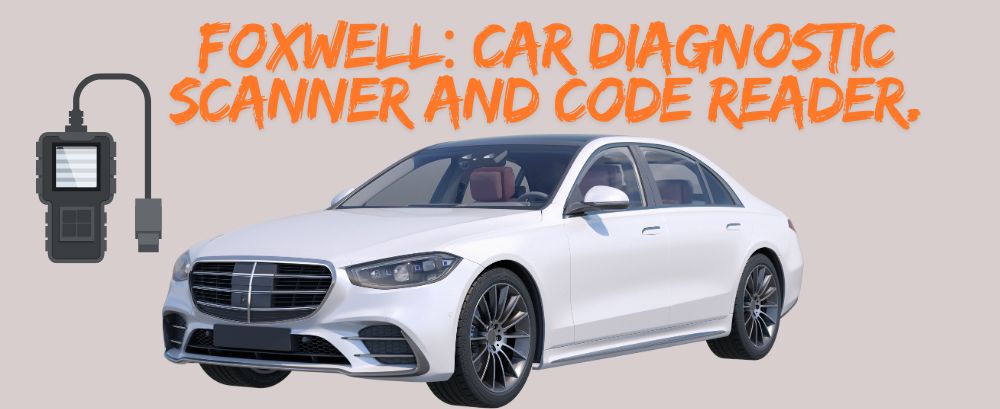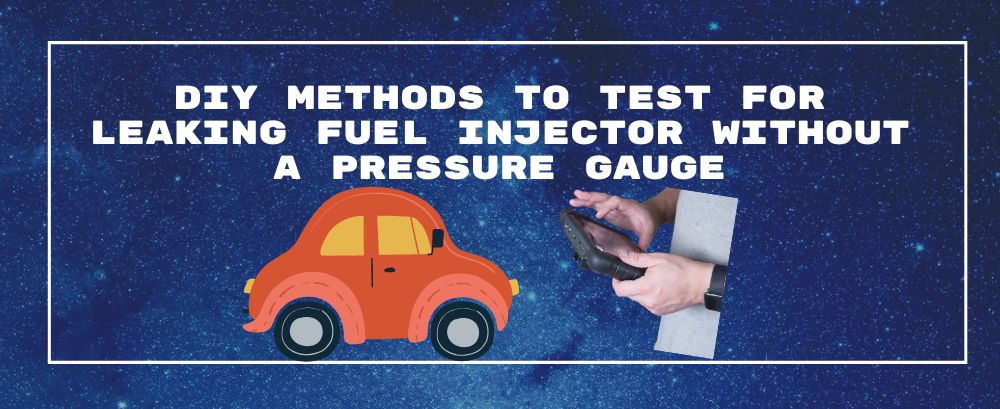Working on GM vehicles has evolved beyond simply diagnosing engine issues; when systems such as ABS (Anti-lock Braking System) or TPMS (Tire Pressure Monitoring System) start malfunctioning, you need specialized scanners to access and interpret their specific modules for proper functioning.
A basic OBD2 scanner alone won't do; in these instances, specialized OBD2 scanners must interact directly with modules related to ABS/TPMS as these will require interaction directly between the modules responsible.
This guide will assist in understanding what features to look for when selecting an OBDII scanner capable of reading GM ABS and TPMS codes, with recommendations of some top scanners.
Why GM ABS and TPMS Codes Require a Specialized Scanner

As with most modern cars, GM vehicles utilize separate control modules for safety-critical components like ABS and TPMS - two essential safety systems used on modern vehicles - which must work as intended during emergency braking situations; ABS prevents wheel lock-up while monitoring tire pressure levels.
While the latter alerts the driver if something seems amiss with tire pressure monitoring system (TPMS). However, unlike engine codes stored within the powertrain control module (PCM), most basic OBDII scanners do not detect them correctly.
As such, to access these specific modules and retrieve codes, a scanner needs to be capable of accessing these modules directly to access and read them; standard OBDII scanners only read engine-related codes, leaving ABS and TPMS issues hidden.
If you drive a GM vehicle and encounter ABS/TPMS warning lights, investing in a scanner that supports these systems is critical for diagnosing and fixing the issue quickly and correctly.
Key Features to Look For in an OBDII Scanner for GM Vehicles
When shopping for an OBDII scanner that can read ABS and TPMS codes in GM vehicles, several key features should be kept in mind when choosing one:
- ABS and TPMS Compatibility: When looking for an ABS/TPMS scanner, look specifically for support for ABS and TPMS diagnostics. With this support, it can access the relevant modules to obtain codes for both systems.
- Live Data Monitoring: For optimal functioning, any good scanner must provide real-time sensor readings from sensors, such as ABS wheel speed sensor data or tire pressure readings from TPMS systems. In both instances, real-time tire pressure readings must be available to confirm that everything is functioning optimally.
- Bi-Directional Control: With this feature, you can read codes and send commands directly to the vehicle's systems - for instance, running tests on ABS modules or recalibrating TPMS sensors after replacing or rotating tires can be performed.
- ECU Coding: Some scanners provide advanced users with ECU coding capability, enabling them to reprogram specific modules within their vehicle's ECU - particularly useful when replacing ABS modules or TPMS sensors.
- Software Updates: As GM vehicles regularly receive software updates that alter diagnostics, having a scanner that allows updates is essential in staying compatible with newer models and systems.
OBDII Scanners That Read GM ABS and TPMS Codes
Below are the best Foxwell OBD2 scanners that support GM ABS and TPMS diagnostics, providing advanced functionality:
Foxwell NT909 Car Bi-Directional Auto Diagnostic Tool with ECU Coding
This premium-level diagnostic tool was designed for professional or experienced DIY mechanics, providing complete bi-directional control and ECU coding to diagnose the ABS and TPMS systems in GM vehicles.
You can perform real-time real-time data analysis and real-time ABS sensor tests, reset TPMS modules, and use its large, user-friendly touchscreen for easy navigation through complex diagnoses.
Foxwell's NT1009 All System Bi-Directional Scan Tool with ECU Coding
The NT1009 is an all-in-one diagnostic tool, featuring excellent ABS and TPMS support. Specifically tailored for deep diagnostics, you can communicate directly with both systems while performing tests or resets.
Furthermore, its ECU coding capability makes this diagnostic tool particularly suitable for users needing to reprogram modules after replacing key components.
Foxwell NT809 Car Bi-directional Scan Tool
For users on a tight budget looking for reliable functionality at an economical price, the Foxwell NT809 Bi-Directional Car Scan Tool provides excellent functionality at an attractive cost point.
Featuring bi-directional control and capable of reading ABS and TPMS codes while streaming live data, it makes an ideal solution for DIY mechanics who need to diagnose ABS/TPMS issues without spending an exorbitant sum.
Foxwell NT809TS OBD2 Diagnostic Scanner with TPMS Support: The Foxwell NT809TS builds upon its predecessor by offering specific TPMS functions like sensor programming and resets, making it ideal for users who frequently face TPMS issues, quickly activating or reprogramming sensors rapidly and efficiently now within their grasp!
With full ABS support and bi-directional control capability, this scanner is a valuable addition for those needing something dedicated solely to both systems.
Standalone Scanners Vs. Laptop/Software-Based Options
To make an informed choice between standalone scanners and laptop/software-based options, it's essential to comprehend their advantages and disadvantages fully:
Standalone Scanners: These all-in-one scanners feature their own display and interface, making them easier to use since no additional hardware is required. They are portable for on-the-go diagnostics. Foxwell's NT series falls into this category, offering access to ABS/TPMS systems directly through its scanners.
Laptop/Software-Based Systems: These systems offer more comprehensive reports and visualization but require a laptop or tablet to connect to a vehicle via Bluetooth adapter or USB cable.
While providing more in-depth analysis, these solutions are less portable and more complex to set up; software-based solutions are better suited to users with extensive diagnostic reports who are comfortable working through more technical setup processes.
How to Use an OBDII Scanner to Read ABS and TPMS Codes
Once you've selected your scanner, using it to diagnose ABS and TPMS codes is straightforward. Here's how:
- Plug In the Scanner: Attach your scanner to an OBDII port beneath your dashboard, typically via an adaptor cable.
- Its Locate ABS or TPM ModulesS: Navigating through the scanner's menu should allow you to locate ABS or TPMS options - these may default to engine diagnostics otherwise.
To Use: To make the best use of your scanner's features, assemble ABS/TPMS modules manually rather than having it automatically select them for you.
- Read the Codes: Your scanner can retrieve any fault codes stored in the ABS or TPMS modules and provide an initial platform to diagnose potential problems. Once fixed, use it again to clear away those same codes, resetting any dashboard lights associated with ABS/TPMS modules.
- Perform Active Tests: With bi-directional control enabled on your scanner, it is possible to run active tests on both the ABS module and TPMS sensor to ensure everything functions as intended.

Common Issues with GM ABS/TPMS Systems and How Scanners Can Help
GM vehicles tend to suffer from some standard ABS and TPMS problems that are easily diagnosed using the appropriate scanner:
- ABS Sensor Failure: One of the most frequently experienced issues with ABS systems is wheel speed sensor failure, preventing the system from functioning optimally by using a scanner to pinpoint which sensor has failed and replace it as necessary.
- Battery Issues with TPMS Sensors: Over time, the small internal batteries in TPMS sensors may deplete and require replacement. A scanner can help identify which sensor has experienced this failure and allow you to reprogram new ones after replacement.
- ABS Module Malfunction: Sometimes, ABS modules fail, which can be costly. A scanner can help determine whether this is the issue or whether another sensor might be responsible.
Conclusion
Selecting the ideal OBDII scanner for your GM vehicle is vital in accurately diagnosing ABS and TPMS issues.
From high-end options like Foxwell's NT909 with ECU coding and bi-directional control or more affordable offerings such as the NT809TS, having access to scanners capable of supporting these advanced systems will save both time and money as you eliminate the guesswork in diagnosing ABS/TPMS codes quickly - giving you the confidence to ensure its ongoing safety and performance for years.
FAQs
What OBD2 protocol does GM use?
GM vehicles typically use the SAE J1850 VPW protocol for OBD2 communication, though newer models may also support CAN (Controller Area Network).
What is a GM Tech 2 scan tool?
The GM Tech 2 is a professional diagnostic scanner used by GM dealerships to access all systems in GM vehicles, including ABS, TPMS, and other specialized modules. It offers advanced diagnostic capabilities beyond standard OBD2 scanners.
How do I know if my vehicle is OBD2 compatible?
Vehicles sold in the U.S. after 1996 are required to be OBD2 compliant. You can check for an OBD2 port under the dashboard and refer to your owner’s manual to confirm compatibility.




Leave a comment
This site is protected by hCaptcha and the hCaptcha Privacy Policy and Terms of Service apply.